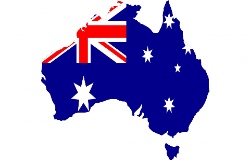Myanmar Major Source and User of Amphetamine Drugs
Myanmar Major Source and User of Amphetamine
Drugs, Says UN Report
New York, Dec 21 2010 1:10PM
The manufacture, trafficking and consumption of synthetic drugs in Myanmar is worsening, with methamphetamine and other amphetamine-type stimulants smuggled from the country affecting neighbouring States and other parts of East and South-East Asia, the United Nations Office on Drugs and Crime (UNDOC) says in a new report.
According to the “Myanmar Situation Assessment on Amphetamine-Type Stimulants (ATS),” which was released yesterday in Bangkok, seizures of ATS pills in Myanmar and countries bordering the country’s Shan state in 2009 tripled compared to the previous year, a trend which has continued this year.
“In 2009, large seizures of high purity crystalline methamphetamine were made in Myanmar,” said Deepika Naruka, the UNODC Coordinator of the Global Synthetics Monitor, Analyses, Reporting and Trends (SMART) programme in East Asia and the Pacific region.
“Authorities in both Myanmar and Thailand confirm that the manufacture of crystalline methamphetamine is now occurring in the Golden Triangle [opium-producing Asian region],” she said.
Between January and September this year, more than 44 million pills were seized in Thailand alone, while over 22 million pills were confiscated in Laos.
Home to between 50 and 80 per cent of the estimated total number of ATS users in the whole of Asia, the issue of amphetamine-type stimulants in the East and South-East Asian region is a major concern, UNDOC says in the report.
While most of the drugs produced in Myanmar – both opiates and methamphetamines – are mainly destined for the international market, domestic use of ATS in the country is increasing, the agency notes, adding that the trend has been exacerbated by the lack of resources for drug treatment facilities.
“This Situation Assessment is the first of its kind. It aims to provide a clearer understanding of the ATS situation in Myanmar, in order to design effective and evidence-informed responses,” said Gary Lewis, UNODC Regional Representative for East Asia and the Pacific.
ENDS


 Australian Catholic University: Principals Navigate Growing Challenges As Anxiety, Depression Increase And Violence, Workloads Intensify
Australian Catholic University: Principals Navigate Growing Challenges As Anxiety, Depression Increase And Violence, Workloads Intensify SNAP: Survivors Deliver Vos Estis Lux Mundi Complaints Against Six Cardinals To Vatican Secretary Of State Parolin
SNAP: Survivors Deliver Vos Estis Lux Mundi Complaints Against Six Cardinals To Vatican Secretary Of State Parolin UNICEF Aotearoa NZ: Myanmar Earthquake A Further Blow For Millions Of Children
UNICEF Aotearoa NZ: Myanmar Earthquake A Further Blow For Millions Of Children Greenpeace: 'Desperate And Deceitful'- Deep Sea Mining Frontrunner Turns Its Back On Pacific Nations
Greenpeace: 'Desperate And Deceitful'- Deep Sea Mining Frontrunner Turns Its Back On Pacific Nations 350.org: Australia Announces Election Dates, Pacific Islanders Rally To Vote For Climate
350.org: Australia Announces Election Dates, Pacific Islanders Rally To Vote For Climate UNICEF Aotearoa NZ: Global Aid Funding Cuts - 14 Million Children At Increased Risk Of Severe Malnutrition And Death
UNICEF Aotearoa NZ: Global Aid Funding Cuts - 14 Million Children At Increased Risk Of Severe Malnutrition And Death